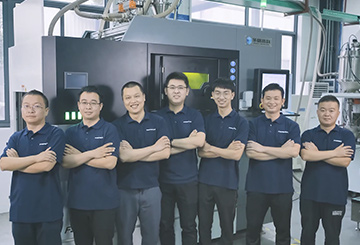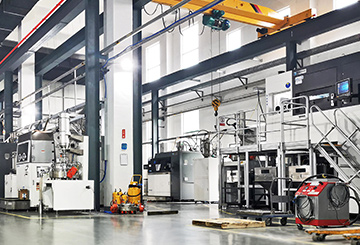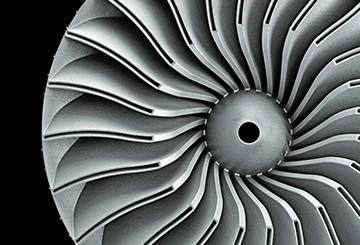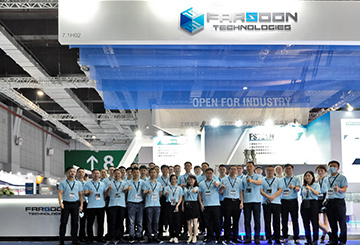In recent years, urban and sports cycling has seen a surge in popularity, fueled by a growing passion for eco-friendly transportation and better public health. As cyclists increasingly seek bikes that match their unique style, comfort, and riding habits, the days of a standard, one-size-fits-all bike are behind us. Enter metal 3D printing—a game-changer that has brought a new era of sleek, lightweight, and fully customizable bikes. Thanks to this cutting-edge technology, today’s two-wheeled machines are not only more functional but also more stylish than ever before.
Since introducing China’s first titanium alloy bicycle under the “Hi-Light” brand in 1992, Hanglun Technology has grown into the world’s largest manufacturer of titanium alloy bikes. With an annual production capacity of nearly 20,000 frames, Hanglun supplies top-tier global brands with the finest titanium alloy frames.
Beyond its strong presence in high-end sporting bicycle markets across North America, Europe, and Southeast Asia, Hanglun Technology has also become a driving force in the Chinese sports cycling market. With a clear focus on innovation, they lead the way in custom-engineered titanium alloy bike frames, handlebars, and other key components, capturing an impressive 80% share of the domestic market.

Figure 1: Hi-Light brand bicycle store featuring 10 series & 50+ models of titanium leisure & sporting bicycles. Image courtesy: Hanglun

Figure 2: Hi-Light brand titanium-frame bicycle with 3D printed parts. Image courtesy: Hanglun
Titanium alloy is renowned for being lightweight, strong, durable, and highly resistant to corrosion, making it a go-to material in industries like aerospace, automotive, medical devices, and consumer electronics. However, working with titanium is notoriously difficult. Its unique structural properties demand precision in every step, especially during welding, which must be executed flawlessly in a single attempt—there’s little room for error or correction. This level of craftsmanship requires exceptional skill, driving up manufacturing costs and, consequently, the final product price.
In 2023, Hanglun Technology made a strategic investment in the Farsoon FS350M 4-laser metal 3D printing system, setting an ambitious goal to produce over 50,000 titanium bicycle components annually using this cutting-edge technology. These components will be used in both high-volume production and custom models around the globe. The focus is on delivering titanium alloy parts that offer superior quality, enhanced strength, reduced weight, and exceptional durability.

Figure 3: Batch production of titanium bicycle seat stay yokes using the FS350M-4 demonstrates a leap in efficiency and innovation. In just 24 hours, 38 components are 3D printed, achieving a 60% increase in efficiency compared to traditional casting methods. The flat aero tube design of these yokes not only streamlines production but also enhances cycling comfort by reducing the impact of the wheelset on the frame. This advanced manufacturing approach not only speeds up production but also contributes to a smoother, more comfortable ride. Image courtesy: Hanglun
“3D printing is a game-changer in our industry and is leading the way in innovation. It pairs perfectly with traditional precision casting. Right now, we use precision casting for big production runs and 3D printing for those smaller, custom projects. This mix lets us create lighter, more complex, and highly customized bicycle parts. Plus, it helps us cut down on costs and environmental impact for small-batch production, speeds up delivery times, and makes the whole process smoother and more efficient.” Says Yanpeng Yang, Vice General Manager, Hanglun Technology.
01 Faster Iteration – In the fast-paced world of consumer goods, a brand’s ability to respond quickly to market demands is crucial. Traditional manufacturing methods, like precision casting, CNC machining, wire cutting, welding, correction, and surface treatment, involve multiple steps that can drag out production timelines. However, in the product design and development phase, 3D printing offers a game-changing solution. By enabling rapid iterations of titanium alloy bicycle components, 3D printing significantly speeds up the process, helping brands get their products to market faster.
02 Structural Integration – But the benefits don’t stop there. This technology also allows for the seamless integration of complex structures into a single piece eliminating the risks often associated with traditional welding—such as deformation, fatigue damage from residual stresses, and issues with size accuracy and poor connections.
03 Lightweighting – Titanium alloy, with its low density of 4.51 g/cm³—just 60% of the weight of steel—has long been a favorite for lightweighting applications. However, traditional welding methods often lead to slightly heavier titanium alloy frames due to the added weight of welding materials. Now, by combining topology optimization with 3D printing technology, we can achieve an impressive reduction in full-frame weight to just 1.4 kg. For cyclists, this means increased speed and reduced turbulence during long-distance rides, offering a smoother, faster, and more efficient cycling experience.

Figure 4: Topology optimized Titanium bike components. Image courtesy: Hanglun
04 Performance – The technology innovation also leads to higher quality, enhanced performance, and more reliable components that are perfectly aligned with the needs of today’s consumers. To further minimize air resistance, Hanglun has successfully integrated cables and components for braking and shifting directly into the 3D printed frame, enhancing overall efficiency. Through continuous innovation, Hanglun has not only pushed the boundaries of what’s possible in bicycle design but has also earned multiple awards and patents for their cutting-edge manufacturing solutions.
At the same time, Farsoon 3D-printed titanium alloy components also demonstrate superior strength and elongation compared to conventionally forged parts. Performance tests on titanium bicycle components produced with the FS350M-4 system reveal exceptional mechanical properties: a tensile strength of 1035 MPa, a yield strength of 998 MPa, and an elongation at break of 13.5%. These enhancements significantly extend the lifespan of the components, underscoring the advanced capabilities of 3D printing technology in producing high-performance parts.
The introduction of Farsoon’s metal 3D printing technology is a testament to Hanglun’s unwavering commitment to innovation. By embracing this cutting-edge approach, Hanglun not only elevates the performance, efficiency, and design standards in the cycling industry but also strengthens the legacy of the “Hi-Light” brand with continuous technological advancements. This dedication to progress ensures that each new development keeps Hanglun at the forefront of the industry, empowering cyclists with the very best in diverse engineering and design.













